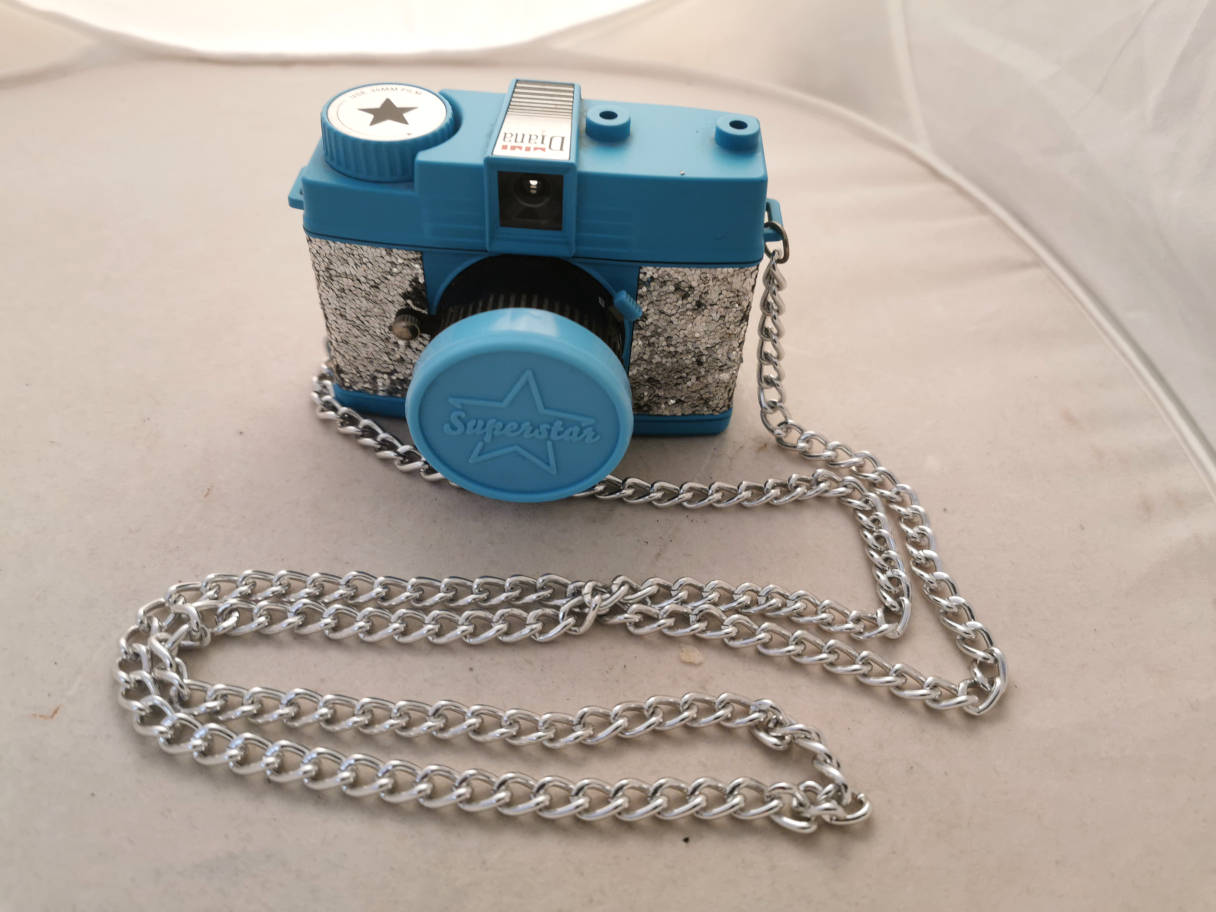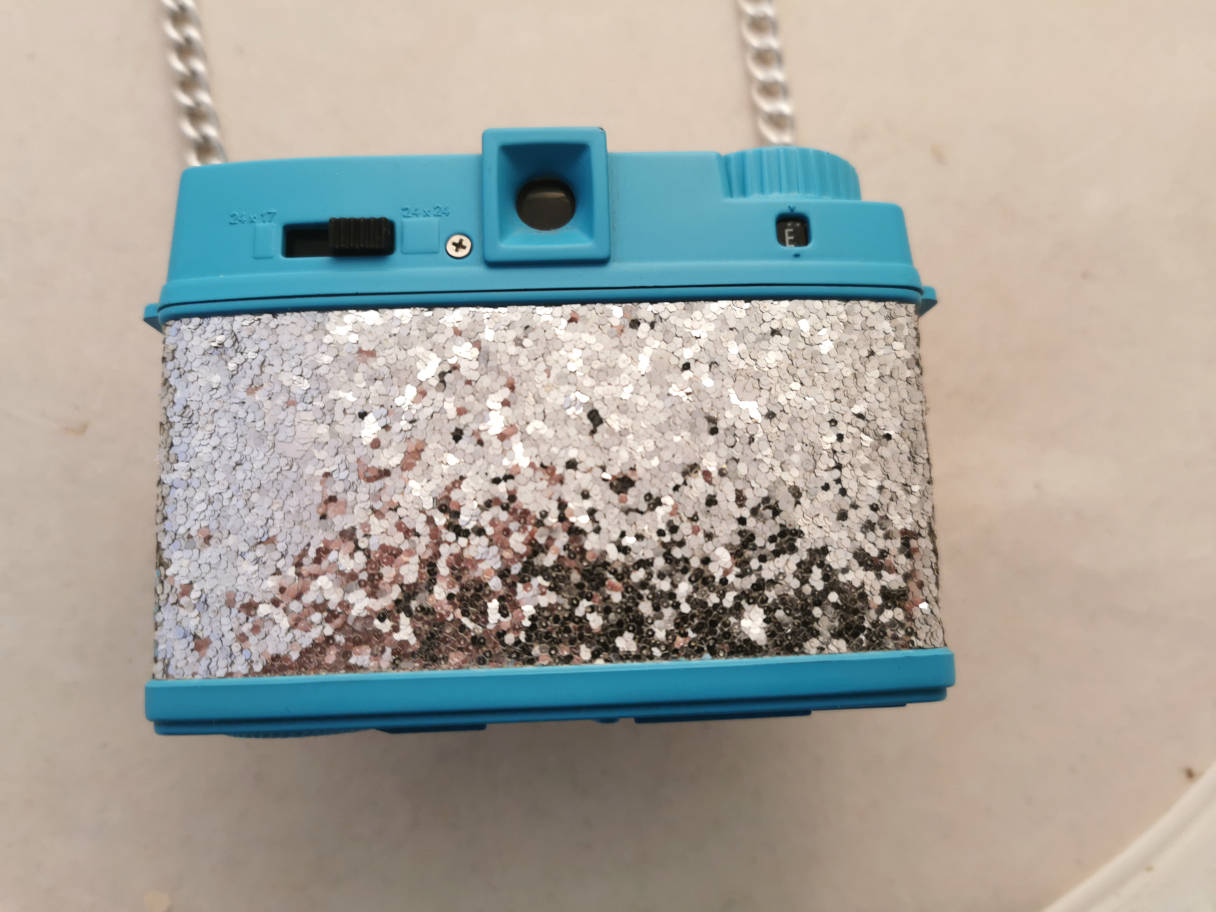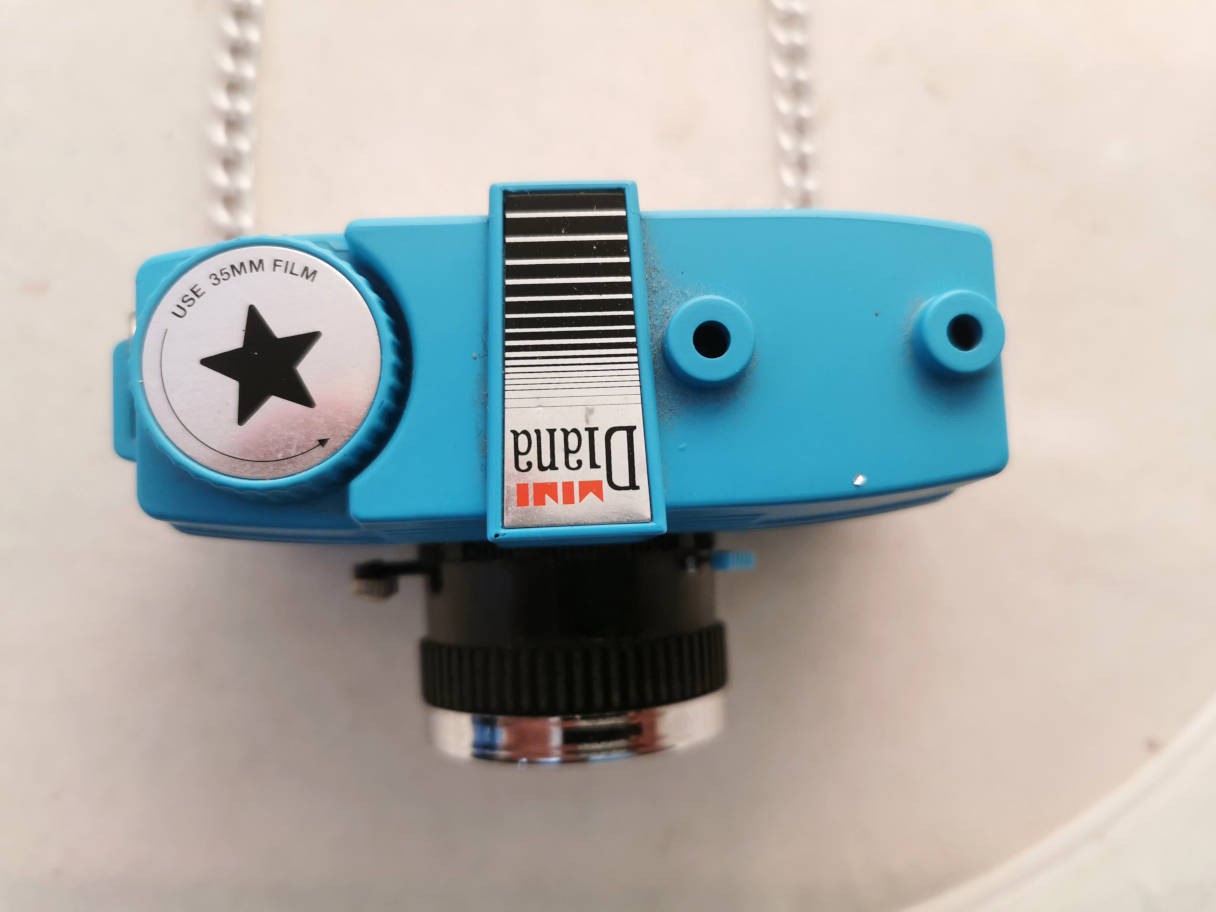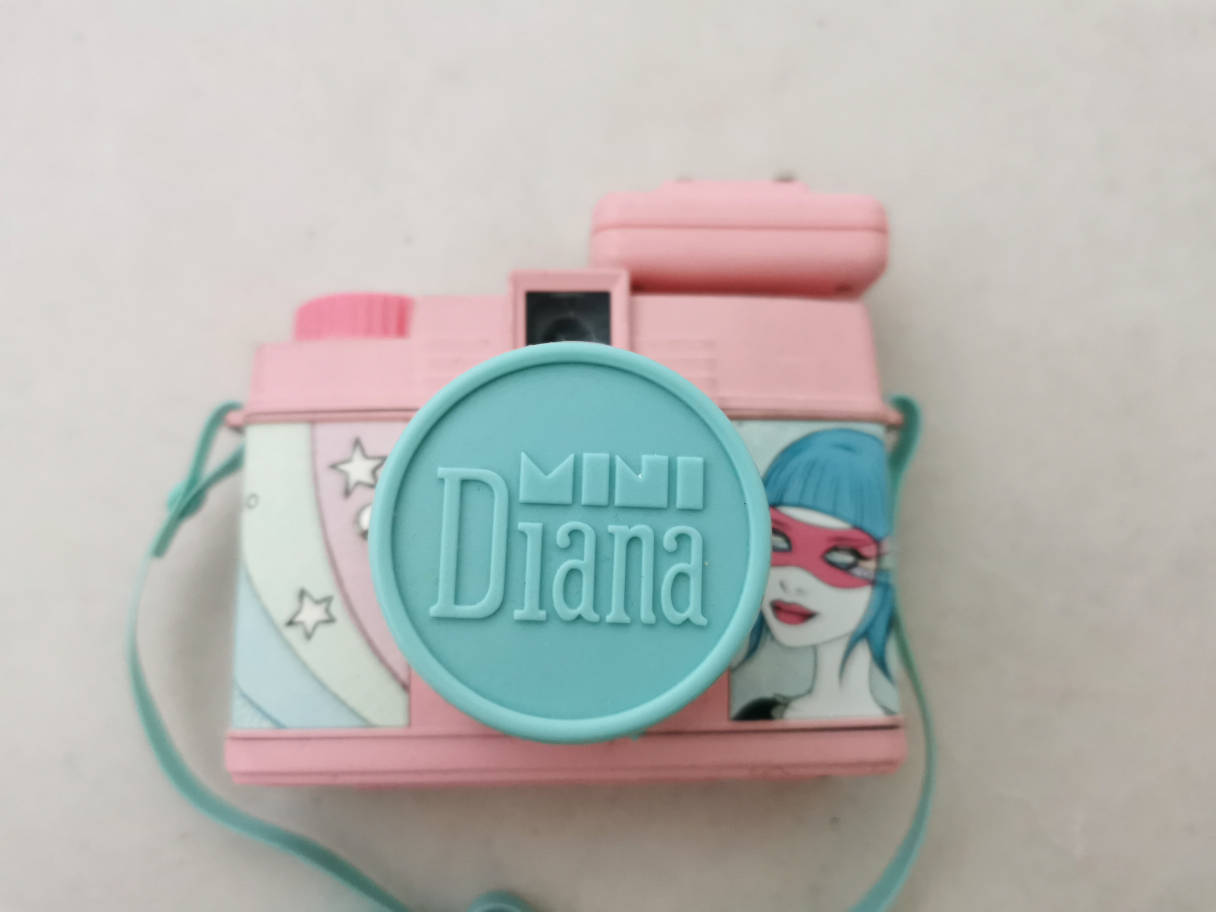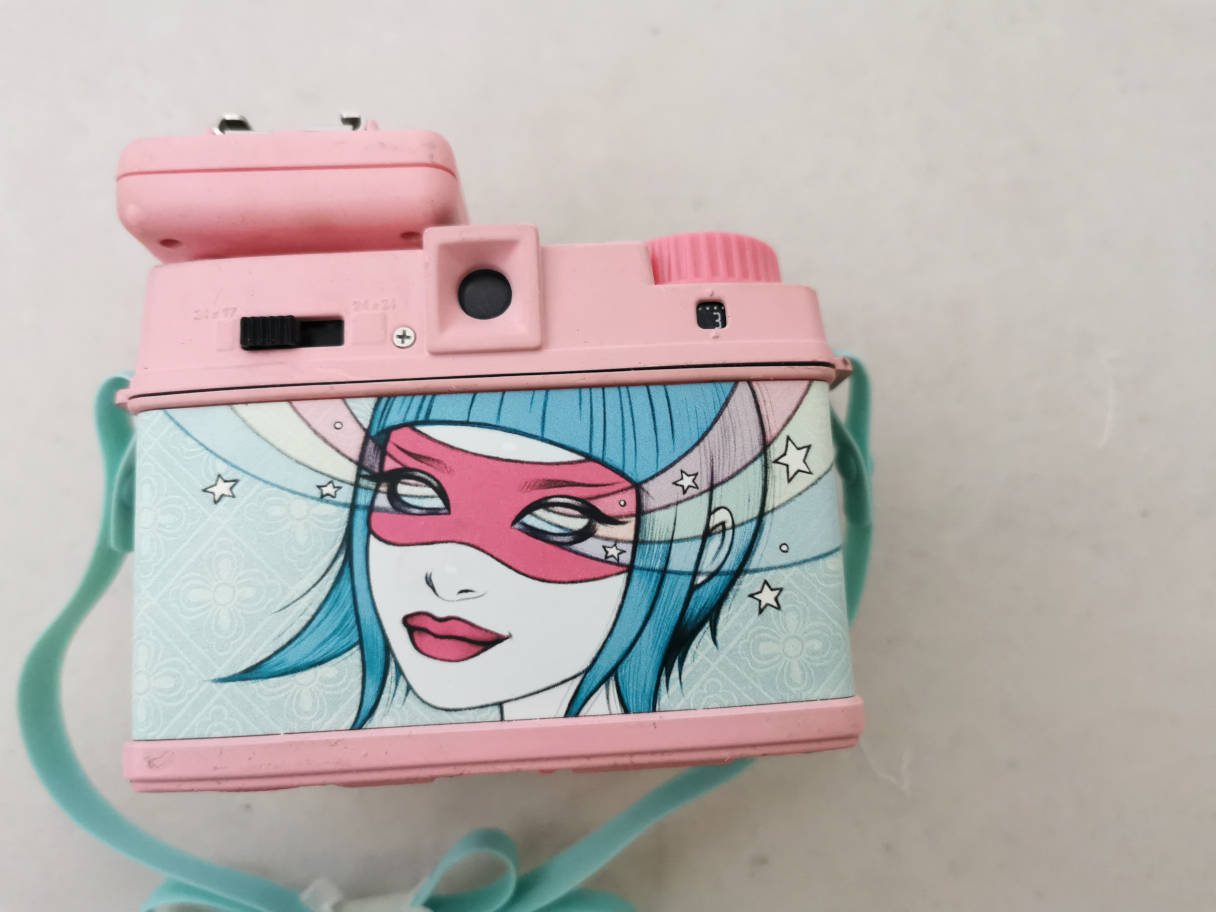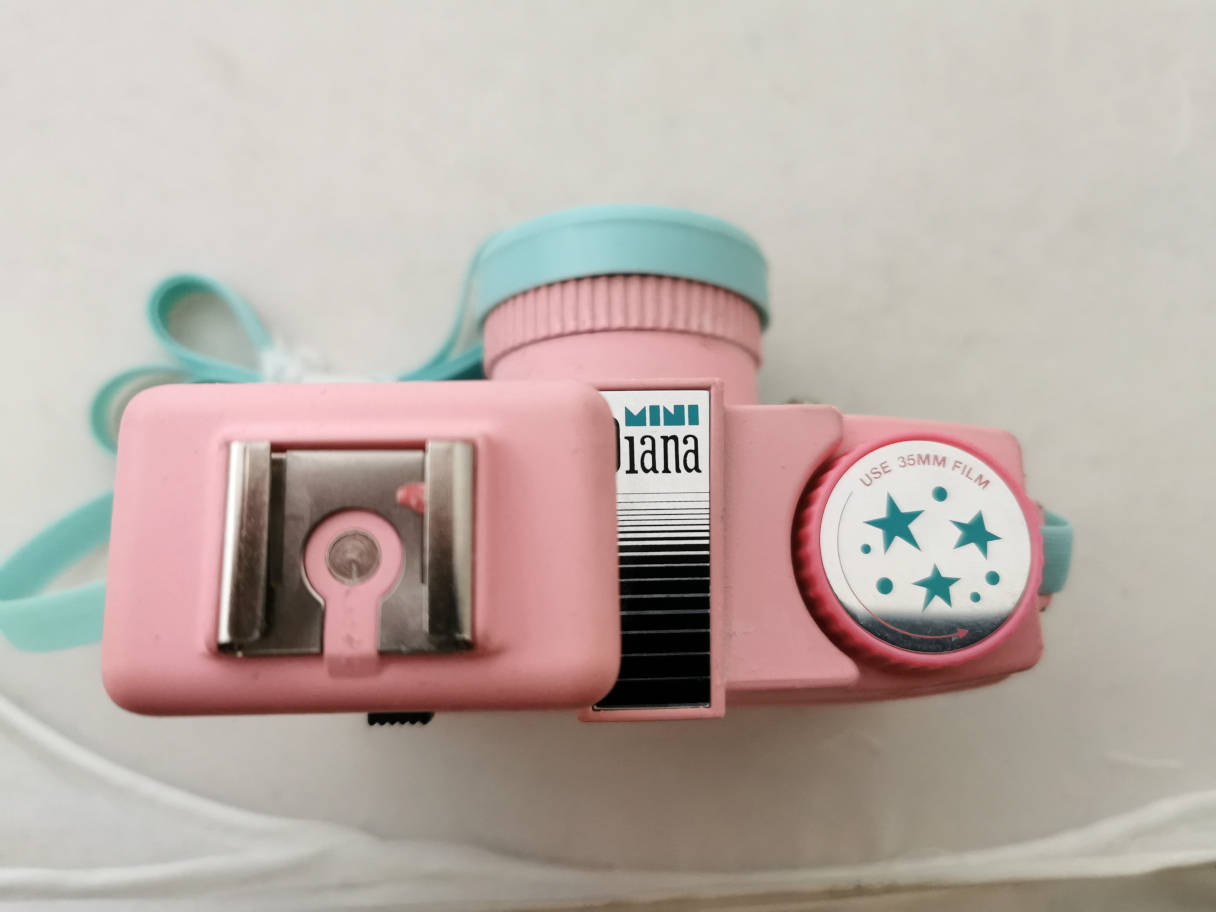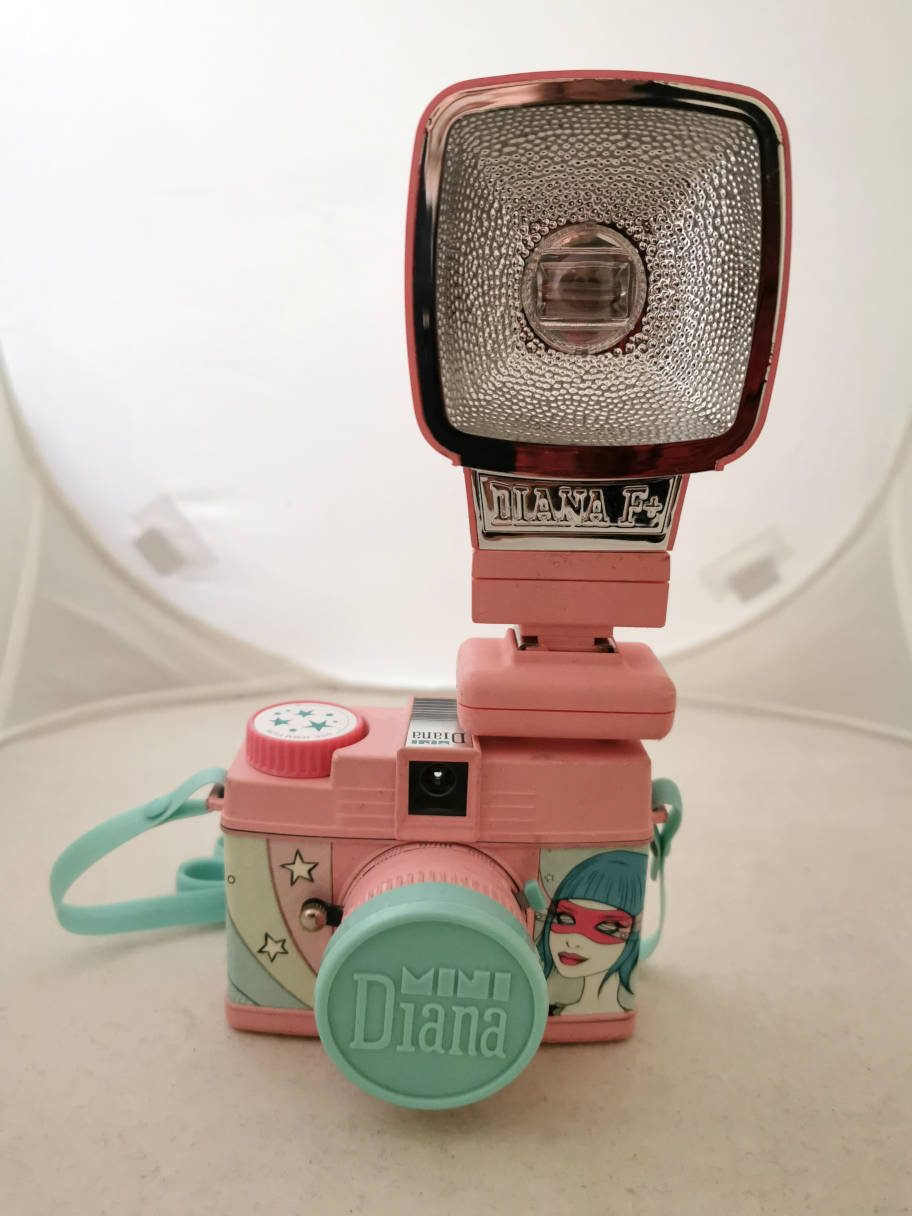Camera top. Flash socket and film advance.
Camera bottom. Tripod socket, back cover release and film rewind.
The basic set.
Film compartment.
Camera and third party flash with adapter to diana socket.
Flash mounted.
| plastikcam.com
Diana Mini and Superstar |
